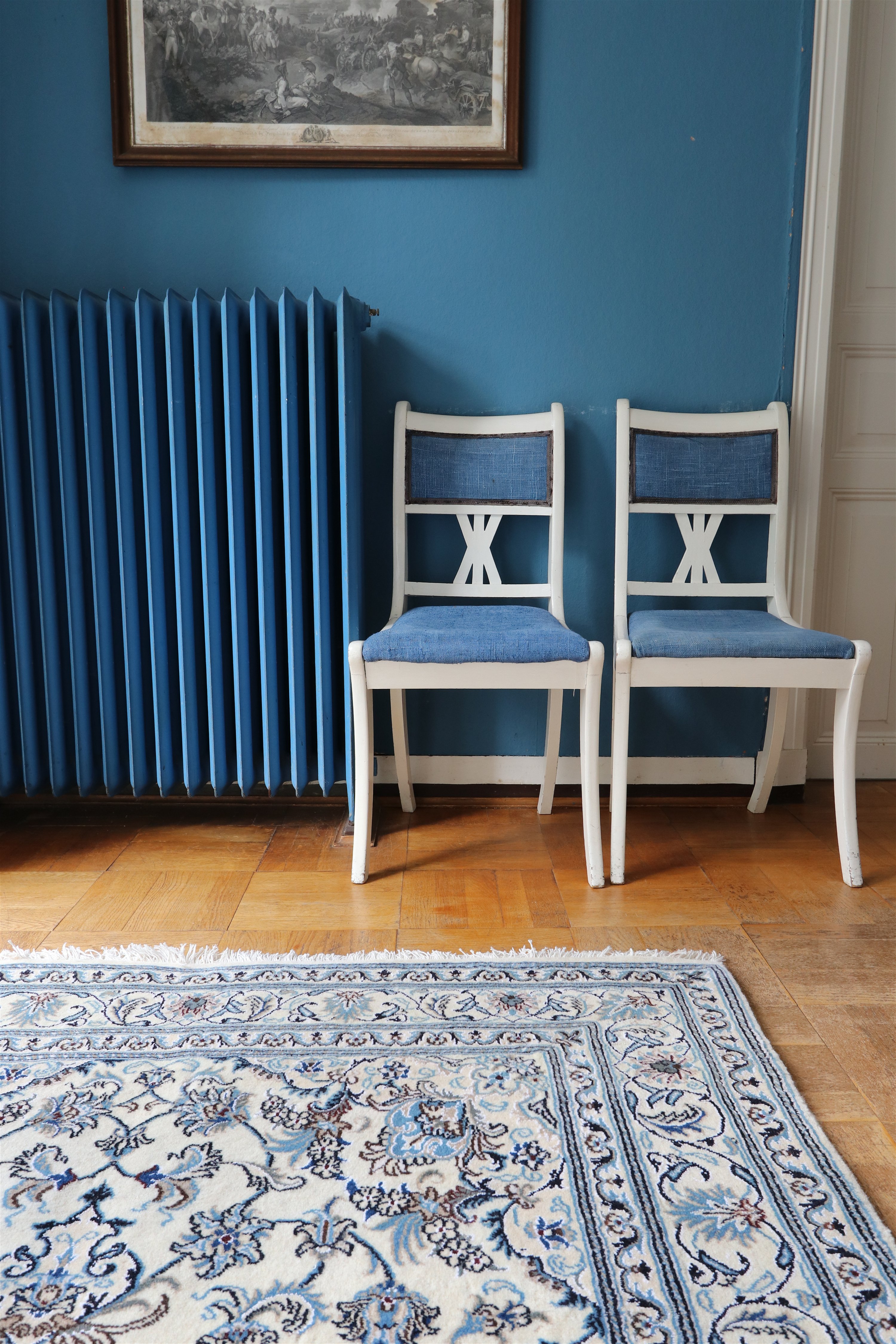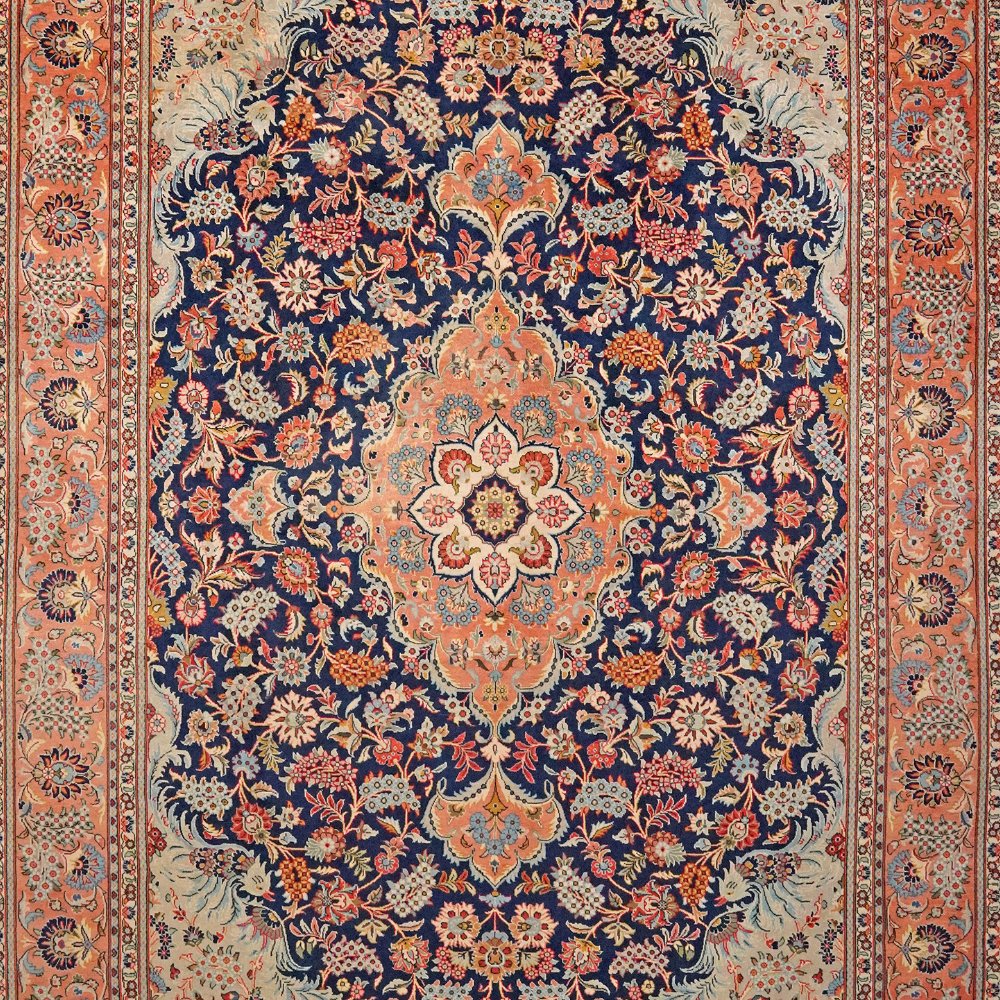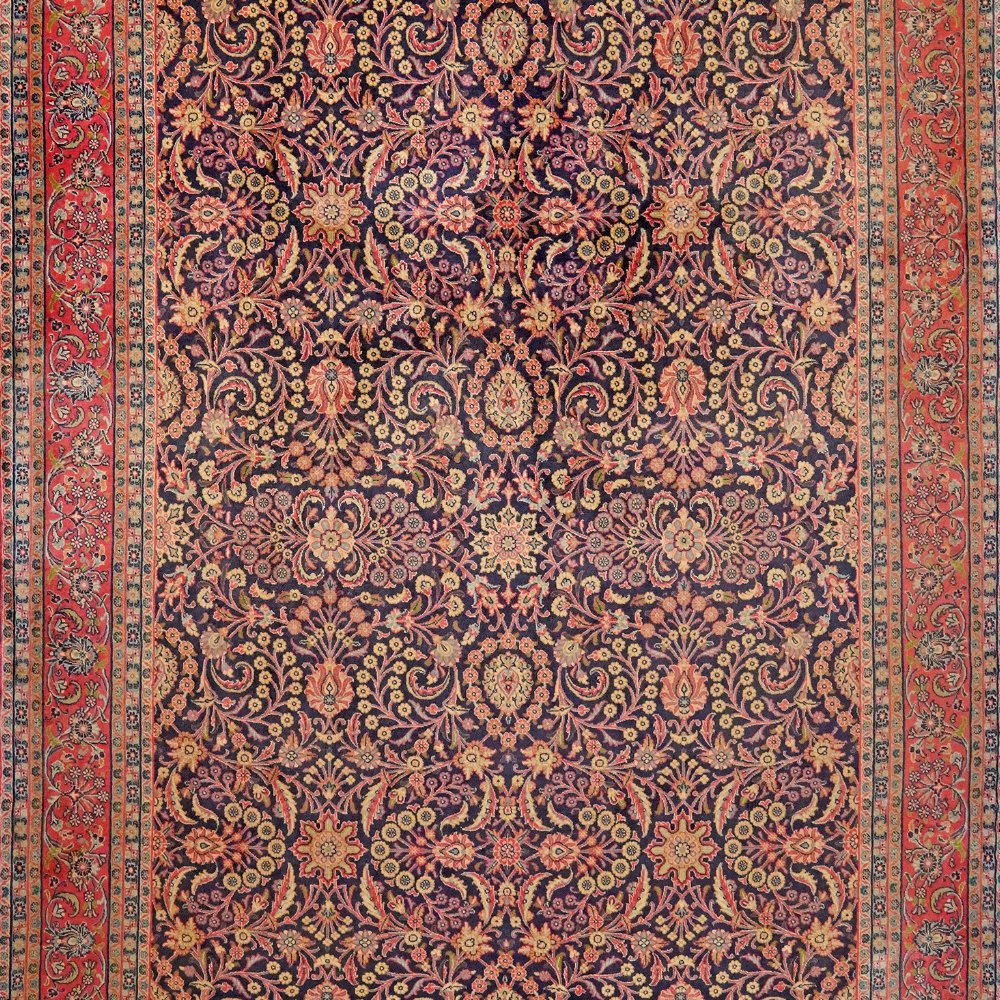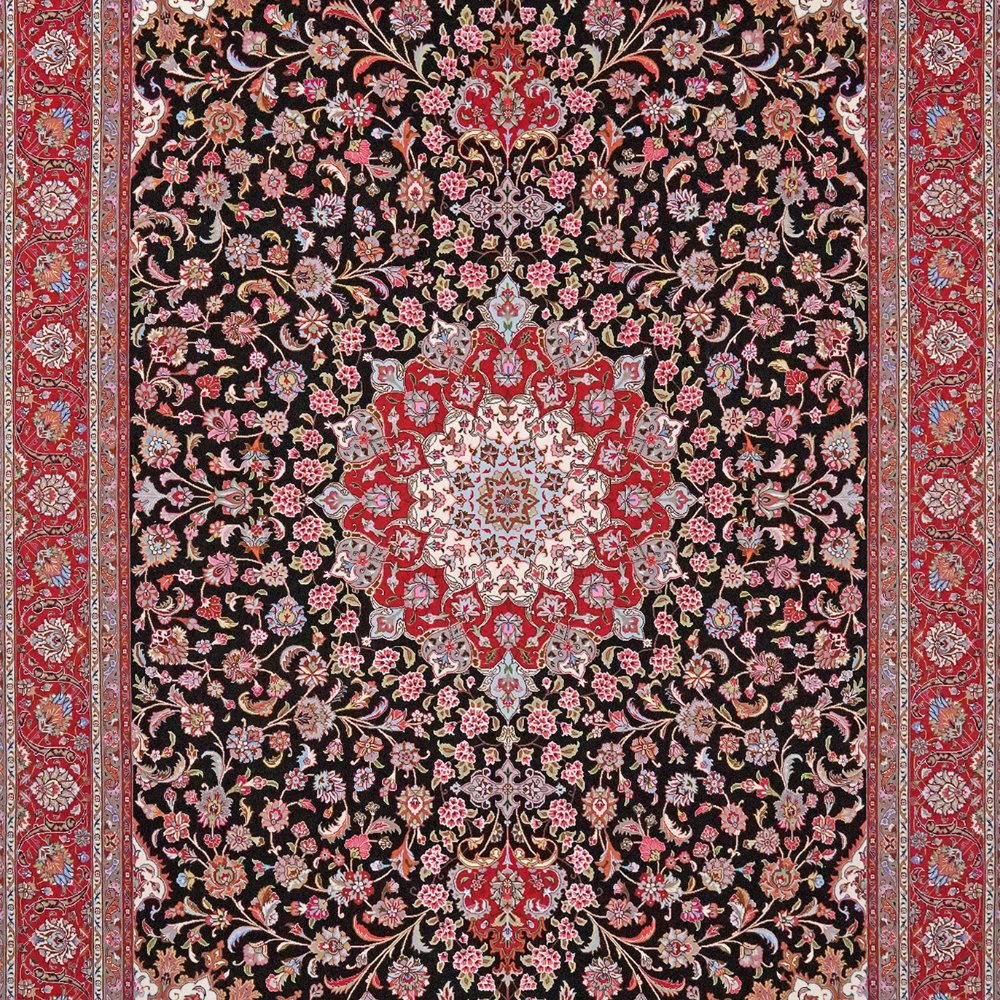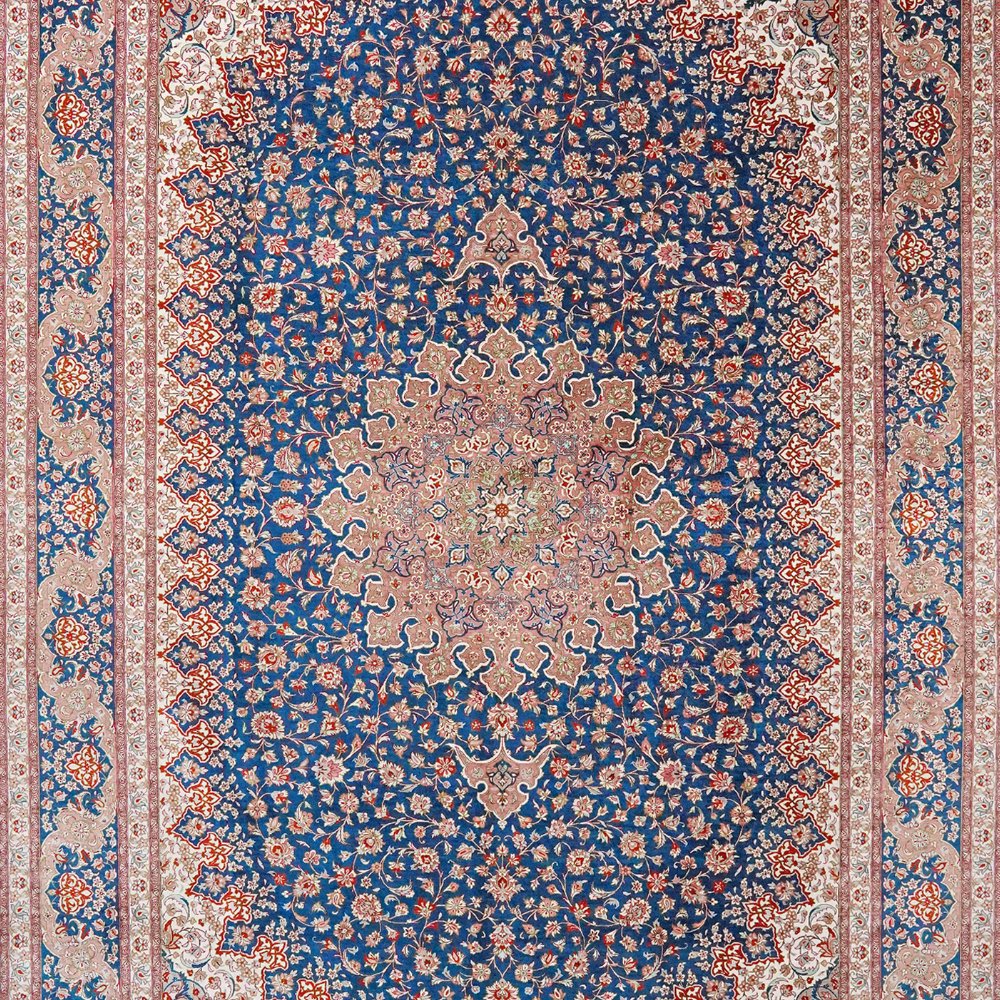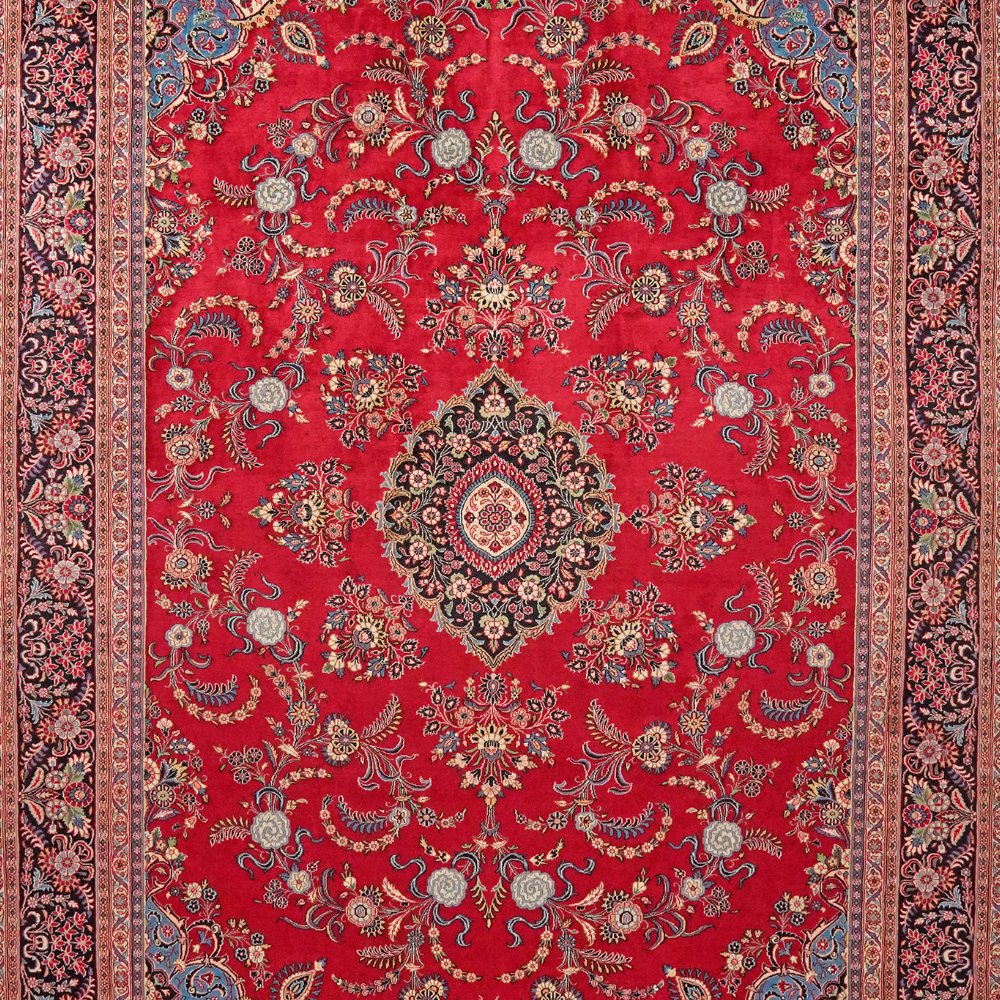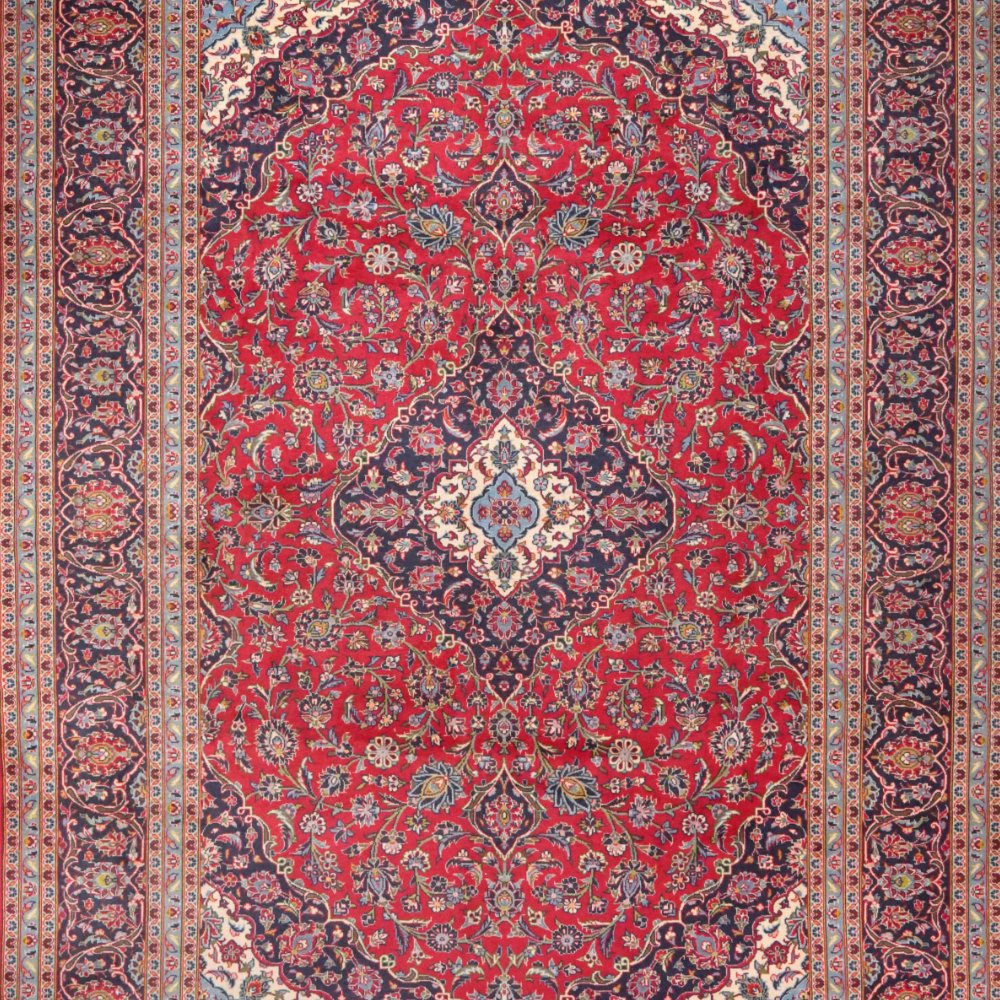Nain
Nain is one of the most famous rug-proveniences in Iran. Since 100 years in Nain rugs are made with distinguished patterns and typical colour combinations. In most of the rugs, variations of cream, white and blue are characteristic colours.
Dominant are floral patterns whose contours are often accentuated with silk or mercerized cotton. Red or green colouring is rare.
Nain rugs are categorized according to number of threads from which the warp is twisted. The more threads were used the thicker the warp which results in fewer knots and ultimately to a lower knot density.
Nain 12La: The "Nain Davosda-La", has a warp which is made out of 12 basic threads with approx. 150,000 - 250,000 knots/sqm.
Nain 9La: The "Nain No-La" has a finer texture with approx. 350.000 - 550.000 knots/sqm then the 12La
Nain 6La: The "Nain Sisch-La" is one if the finest Persian rugs. The knotting density is approx. 850,000 - 1,200,000 knots / sqm.
Even extremely fine 4La Nain can be found. Most of the Nain today come from East Iran.
Kashan
The famous rug provenance of Keshan or Kashan is located south of Tehran. Here, rugs are hand-knotted to the highest standards. Keshan was also one of the most important trading centres along the Silk Road in the history of the Persian Empire. Keshan rugs are known for the fact that the pile is knotted from very high quality sheep's wool. The warp and weft are usually made of cotton, which makes the rug extremely sturdy. Often Keshan rugs show a large central medallion with floral ornaments, but all-over patterns are also popular. The colours are mostly traditional red, blue and beige tones.
Shop Kashan →
Bidjar
Bidjar rugs originate from the city of the same name in western Iran. The city is mainly inhabited by Kurds, who can look back on a long tradition of rug weaving in this area. Bidjar rugs are known for being particularly robust and dirt-repellent. Since the rugs are knotted extremely tightly the pile stands vertically upwards, thus dirt particles hardly have a chance to penetrate the pile.
Thus, the Bidjar is guaranteed a long life. The rugs are usually decorated with the well-known Herati pattern.
The pattern is reminiscent of a flower with four leaves or small jumping fish, which is why it is also called Mahi (fish in Persian). As this pattern is a classic and modest pattern, Bidjar rugs are popular furnishing rugs, as they can easily be integrated anywhere.
Shop Bidjar →
Tabriz
Tabriz rug come from the eponymous city of Tabriz, which is located in the Azerbaijan province of Iran, far to the northwest of the country. The people who live here are called Asari and they are culturally closely connected to the people from Azerbaijan and Turkey. Rugs from Tabriz usually have a short and dense floor made of high-quality wool. The pattern is usually dominated by a central medallion with floral motifs. In addition, you can often find Tabriz rugs with a continuous pattern which is called "Mahi motif". Mahi means fish in Persian, and describes the small, like fish-looking symbols you can find in this pattern. Rugs from Tabriz are distinguished with the help of an additional quality designation. The categorization refers to the knot density per square metre. This is indicated by the so-called "Raj".The finest rugs with well over a million knots per square meter are called 80Raj. Rugs with a knot density of about 300,000-500,000 knots per m2 are labeled 40Raj.
40 Raj, corresponds to about 300,000 knots per m2
50 Raj, corresponds to about 500,000 knots per m2
60 raj, equivalent to about 750,000 knots per m2
70 raj, equivalent to approximately 1,000,000 knots per m2
80 raj, equivalent to approximately 1,300,000 knots per m2 (very rare!)
Shop Tabriz →
Ghoum
Rugs from the city of Ghoum are absolutely luxurious classics. The city is located in the center of Iran, south of the capital Teheran. Ghom is known worldwide for its natural silk, which is often used in their rugs. Silk rugs from Ghom are among the most expensive Persian rugs you can buy today. The fine rugs have patterns from very different regions of Iran. However, the designs are predominantly floral. Medallions can be found, as well as intricately knotted hunting scenes. Wool rugs from Ghom usually have up to 600.000 knots/m2. Silk rugs can even have up to over 1.000.000 knots/m2.
Shop Ghoum →
Ekbatan
Ekbatana was an ancient city in the then Persian Achaemenid Empire. It is said to be the ancient name of the city of Hamadan. Rugs that do not come from the surroundings of Hamadan and are made in the city itself sometimes are called Ekbatan.
This piece is a special gem, as it's older than 50 years and was bought by our grandfather.
Shop Ekbatan →
Ardebil
The city of Ardebil is the capital of the province of the same name in northern Iran. In terms of design Ardebil rugs are related to Caucasian rugs. They're thin and have a beautiful geometric pattern. Fun fact: One of the oldest Persian rugs every discovered is called the Ardebil rug. This rug was knotted in Kashan, made for a big mosque and was sold in order to raise funds for the renovation of the mosque. Today the Ardebil rug can be marvelled at the Victoria and Albert Museum in London.
Shop Ardebil →
Ardakan
Ardakan rugs come from the northwestern part of the province Jasd in Iran. These robust rugs resemble the patterns and colours of the Keshan rugs. They usually have a large floral medallion in the center. Ardakan rugs are of very high quality due to their high number of knots and the fine, elaborate patterns.
Shop Ardakan →

